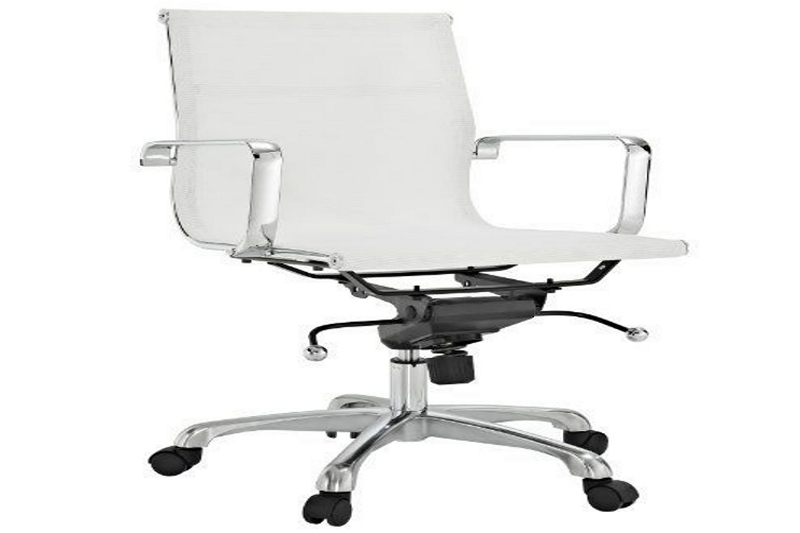Many swivel chairs come with locks on the base. These locks are often found in schools, waiting rooms and offices. The purpose of these locks is to prevent people from spinning around in a chair too quickly and potentially injuring themselves or others nearby.
Unfortunately, this also means that it’s difficult to remove the lock so you can use your favourite swivel chair how you want! In this article, we’ll explain how to remove locks from a swivel chair without restrictions!

Steps to Remove Locks on a Swivel Chair
Step 1. Remove the bolt from the base of your swivel chair.
Step 2. Place a bucket under the lock to catch any water that is released when you remove it.
Step 3. Apply lubricant or WD40 to the pivot area on both sides of the locking arm so it will slide out more easily. Be careful not to apply too much, as this may make removing and reinstalling difficult later!
Step 4. Push one side of the locking arm over its edge until enough space appears and then pull firmly on it in an upward motion while holding onto how tightly you can with two hands.
This should release tension and allow for easy removal after repeated attempts – don’t be afraid to use some elbow grease! You might also need to remove the locking arm’s retaining screw with a hex wrench to help release tension.
Step 5. Spray some WD40 or lubricant onto both sides of the lock and pull firmly on it while gently twisting at the same time until you hear a click sound (this indicates that you’ve successfully removed your seat lock). If this doesn’t work, try removing any screws using an appropriate tool such as a Phillips head screwdriver before applying more force.
How do you Keep a Caster From Locking?
To prevent the caster from locking, you can use a variety of methods to disable it. The most common one is to remove all screws and lubricate them with WD40 or other appropriate material before reinstalling each in place so that they don’t retract into their housing when pressure is applied.
You may also purchase a replacement kit for your lock casters’ sleeves if this seems like too much work (available on Amazon).
How do I Stop my Chair From Rolling on the Uneven Floor?
Sometimes it is necessary to apply weight such as sitting in the chair and putting a heavy object on top.
Another possible solution would be using WD40 or another appropriate lubricant, spraying generously between the casters’ housing and shafts of both wheels before reinstalling them. This will allow for more rolling power without locking up from friction caused by uneven flooring.
What are Some Signs That Your Caster Locks Might Need Replacing?
Some warning signs you should look out for when considering how to fix lock casters is if they make an audible noise when turning or if they have trouble rolling smoothly across surfaces with different levels of texture (e.g., carpeted floors).
These two symptoms may indicate that there is too much pressure on the lock, or that there is some other problem with how it is set.
If you notice a clicking sound when rolling your chair across carpeted surfaces, this could be an indicator to fix wheel locks on swivel chairs gone too tight over time. In these cases, removing and replacing the caster stops may help alleviate any friction caused by carpeting for improved rolling power without locks engaged.
If both casters are locking up at inappropriate times: spray lubricant liberally between all moving parts within each caster housing before reinstalling them to try and prevent future seizing from happening again in the process of adding mobile freedom back into how to unlock locked wheels on a desk chair!
How do I Know How Tight my Chair Locks Should be?
It’s important not to overtighten the screw because doing so will make it difficult to unlock later on: just tighten until there’s no more play left in the hardware and then stop! If you’re worried about how tight the locks should be, have a professional look at them to avoid any mistakes.
The tighter your chair’s lock is placed, the less likely it will slide out of position when someone sits in it. However, if you tighten too much and create that “no play” feeling, then you’re more likely on making a potentially expensive mistake by overtightening because the hardware cannot move any further into place!
If there are two different screws for locking casters with holes designed differently (e.g., one long screw and one short), do not combine those parts: they weren’t made to work as one piece! You can use an appropriate tool like pliers or vice grips to hold these pieces while tightening them down .
How do I stop my castor wheels from rolling?
Tighten the screw so that it’s just hand tight. If there is a lock, tighten until you hear or feel it snap into place.
You can also use pliers to help make sure the castor wheels are securely in place and not able to move any further.
